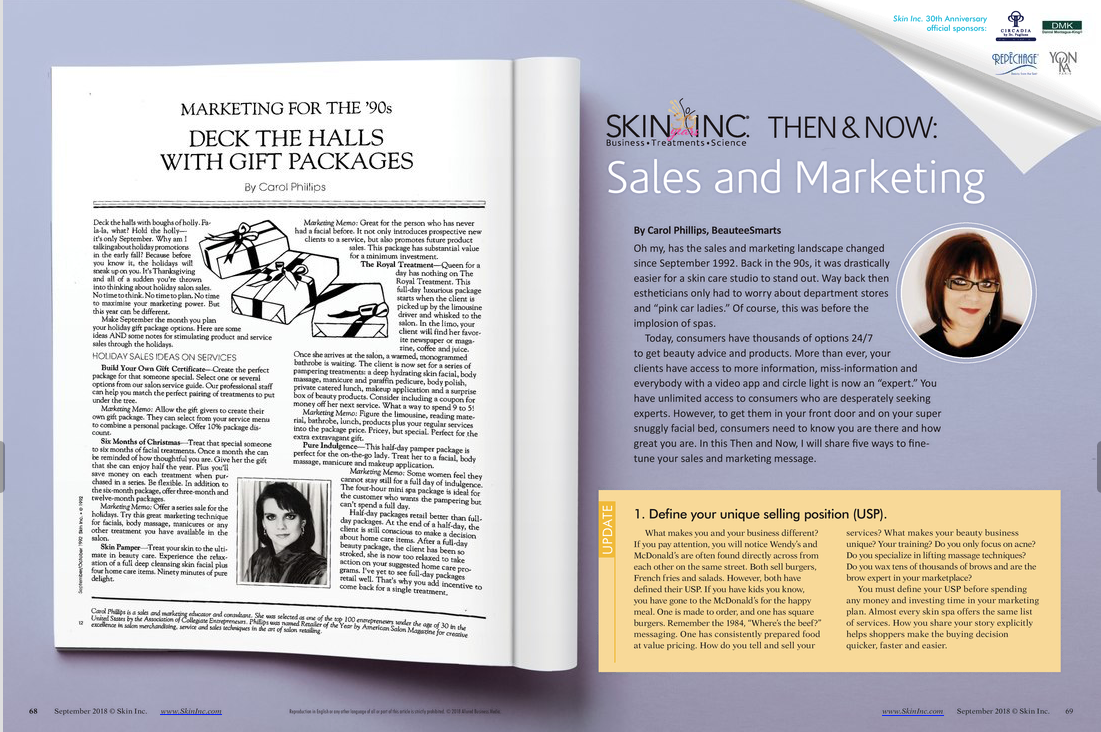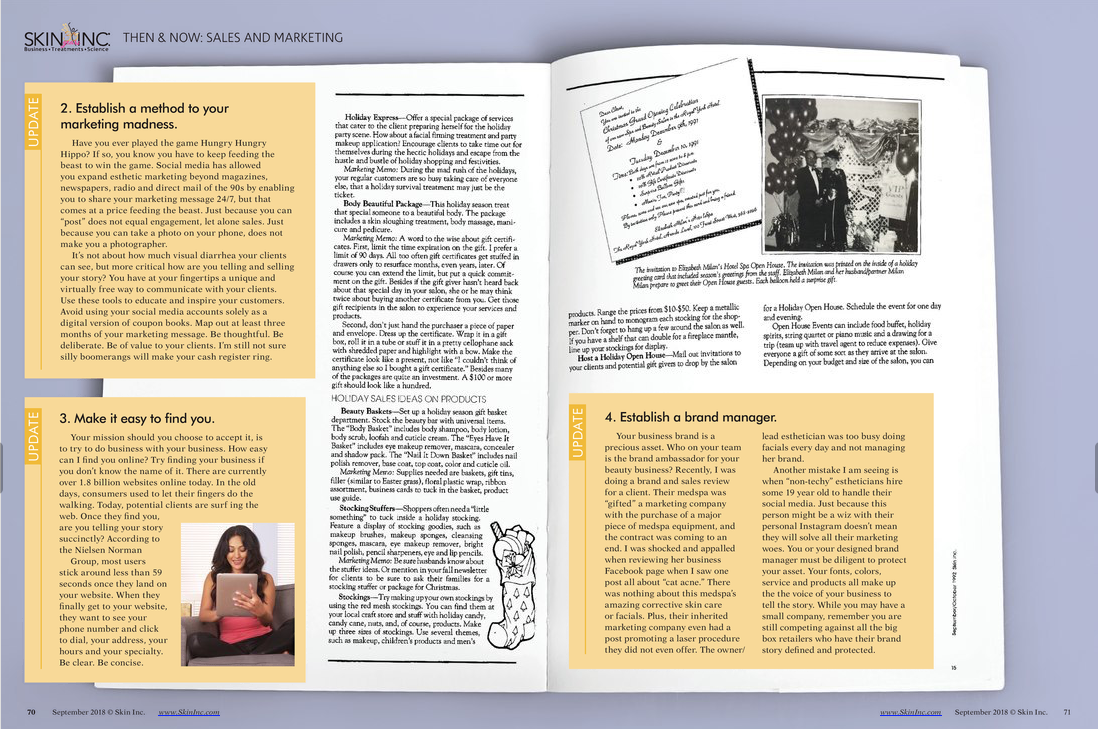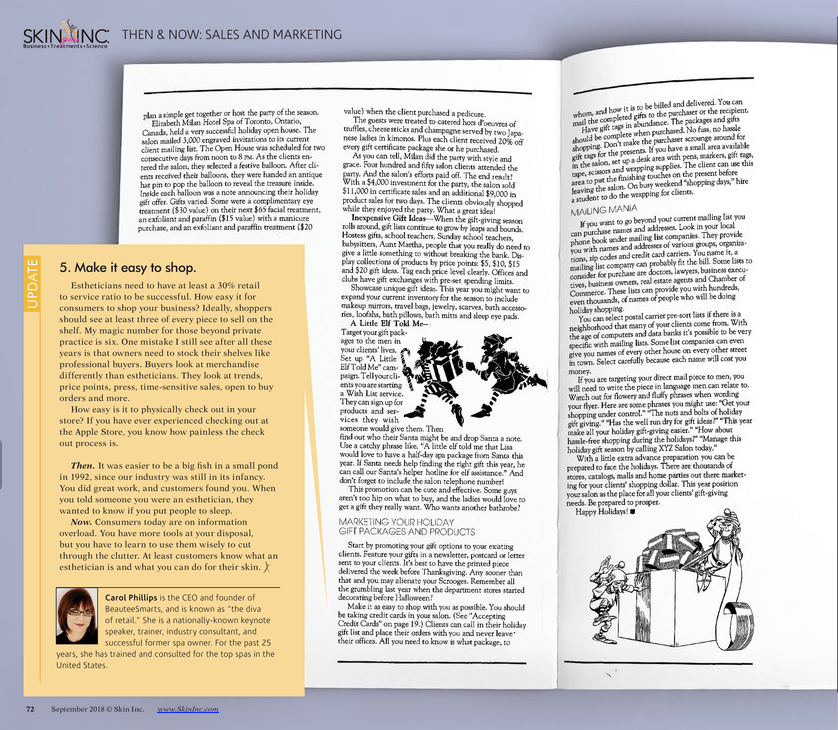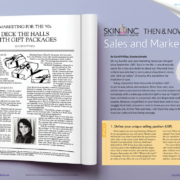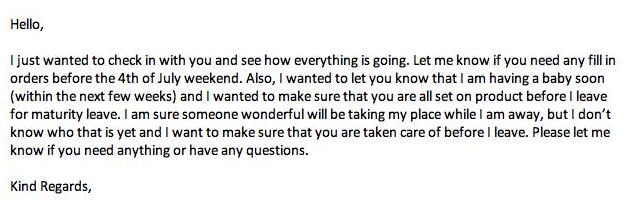Then & Now: Sales and Marketing
Article originally published Skin Inc. Magazine takes a look back and compares sales and marketing articles written by Carol Phillips then 1992 to now.
Oh my, has the sales and marketing landscape changed since September 1992. Back in the 90s, it was drastically easier for a skincare studio to stand out. Way back then estheticians only had to worry about department stores and “pink car ladies.” Of course, this was before the implosion of spas.
Today, consumers have thousands of options 24/7 to get beauty advice and products. More than ever, your clients have access to more information, miss-information and everybody with a video app and circle light is now an “expert.” You have unlimited access to consumers who are desperately seeking experts. However, to get them in your front door and on your super snuggly facial bed, consumers need to know you are there and how great you are. In this Then and Now, I will share five ways to fine-tune your sales and marketing message.
1. Define your unique selling position (USP).
What makes you and your business different? If you pay attention, you will notice Wendy’s and McDonald’s are often found directly across from each other on the same street. Both sell burgers, French fries, and salads. However, both have defined their USP. If you have kids you know, you have gone to McDonald’s for a happy meal. One is made to order, and one has square burgers. Remember 1984, “Where’s the beef?” messaging. One has consistently prepared food at value pricing. How do you tell and sell your services? What makes your beauty business unique? Your training? Do you only focus on acne? Do you specialize in lifting massage techniques? Do you wax tens of thousands of brows and are the brow expert in your marketplace?
You must define your USP before spending any money and investing time in your marketing plan. Almost every skin spa offers the same list of services. How you share your story explicitly helps shoppers make the buying decision quicker, faster, and easier.
2. Establish a method for your marketing madness.
Have you ever played the game Hungry Hungry Hippo? If so, you know you have to keep feeding the beast to win the game. Social media has allowed you to expand esthetic marketing beyond magazines, newspapers, radio, and direct mail of the 90s by enabling you to share your marketing message 24/7, but that comes at a price of feeding the beast. Just because you can “post” does not equal engagement, let alone sales. Just because you can take a photo on your phone, does not make you a photographer.
It’s not about how much visual diarrhea your clients can see, but more critical how are you telling and selling your story? You have at your fingertips a unique and virtually free way to communicate with your clients. Use these tools to educate and inspire your customers. Avoid using your social media accounts solely as a digital version of coupon books. Map out at least three months of your marketing message. Be thoughtful. Be deliberate. Be of value to your clients. I’m still not sure silly boomerangs will make your cash register ring.
3. Make it easy to find you.
Your mission should you choose to accept it, is to try to do business with your business. How easy can I find you online? Try finding your business if you don’t know the name of it. There are currently over 1.8 billion websites online today. In the old days, consumers used to let their fingers do the walking. Today, potential clients are surfing the web. Once they find you, are you telling your story succinctly? According to the Nielsen Norman
Group, most users stick around less than 59 seconds once they land on your website. When they finally get to your website, they want to see your phone number and click to dial, your address, your hours, and your specialty. Be clear. Be concise.
4. Establish a brand manager.
Your business brand is a precious asset. Who on your team is the brand ambassador for your beauty business? Recently, I was doing a brand and sales review for a client. Their medspa was “gifted” a marketing company with the purchase of a major piece of medspa equipment, and the contract was coming to an end. I was shocked and appalled when reviewing her business Facebook page when I saw one post all about “cat acne.” There was nothing about this medspa’s amazing corrective skincare or facials. Plus, their inherited marketing company even had a post promoting a laser procedure they did not even offer. The owner/lead esthetician was too busy doing facials every day and not managing her brand.
Another mistake I am seeing is when “non-techy” estheticians hire some 19 year old to handle their social media. Just because this person might be a wiz with their personal Instagram doesn’t mean they will solve all their marketing woes. You or your designed brand manager must be diligent to protect your asset. Your fonts, colors, service, and products all make up the voice of your business to tell the story. While you may have a small company, remember you are still competing against all the big box retailers who have their brand story defined and protected.
5. Make it easy to shop.
Estheticians need to have at least a 30% retail to service ratio to be successful. How easy is it for consumers to shop in your business? Ideally, shoppers should see at least three of every piece to sell on the shelf. My magic number for those beyond private practice is six. One mistake I still see after all these years is that owners need to stock their shelves like professional buyers. Buyers look at merchandise differently than estheticians. They look at trends, price points, press, time-sensitive sales, open-to-buy orders, and more.
How easy is it to physically check out in your store? If you have ever experienced checking out at the Apple Store, you know how painless the checkout process is.
Then. It was easier to be a big fish in a small pond in 1992 since our industry was still in its infancy. You did great work, and customers found you. When you told someone you were an esthetician, they wanted to know if you put people to sleep.
Now. Consumers today are on information overload. You have more tools at your disposal, but you have to learn to use them wisely to cut through the clutter. At least customers know what an esthetician is and what you can do for their skin.
